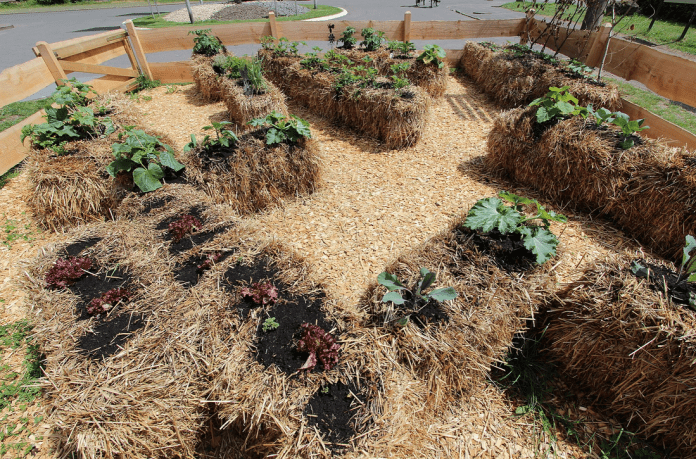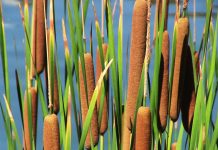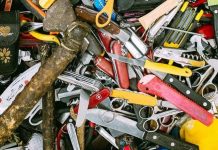This is the simplest and easiest method of gardening “no work,” by far. You plant straw directly into bales, and as the season progresses, the straw is broken down into virgin soil which nourishes the plants from within the bale.
Hay bale gardening is just what you’re looking for: It’s cheap, it’s easy and fertilizers or pesticides are not needed.
What are the advantages of hay bale gardening?
Hay bale gardening is great, and here are some reasons why:
- It works for soils of any kind. The type of soil is not necessarily the most important criterion that will be taken into account when selecting their safe location, but it is generally necessary to have good soil for growing a garden. Well, not with a gardening of this type. You can live on the highest mountain’s rocky top, and still grow your own tomatoes!
- It’s organic. You don’t need pesticides to grow a bale garden. Your crops are naturally protected against weeds and harmful insects.
- It’s low maintenance. No more digging and weeding!
- It’s cheap. Both straw and hay bales are inexpensive.
- It doesn’t use many resources, it doesn’t need much water, and the workload is also much smaller than normal!
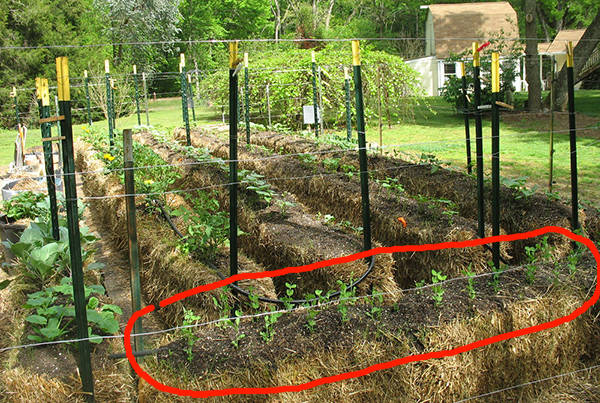

Straw or hay?
Currently, there are benefits and drawbacks for both approaches. Straw bales are generally cheaper than bales made from hay. On the other hand, hay appears to be producing a more nutritious compost than straw. There’s also said that hay holds more water than straw. However, hay bales also contain several seeds which can cause trouble if they are immune to the relatively high temperatures produced during the process.
What type of straw/hay?
Experienced gardeners who have used this method for some time state that wheat, oats , rye, and barley straw are best suited to growing a garden. This is because these plants are harvested for grains, meaning that there will be virtually no seed left in the straw bale. Choose pea, vetch, or alfalfa, if you’re in hay bales.
Using the option available in your region is cost-effective, but if you have the chance to choose, you should avoid corn and flax bales; they take longer to decompose because they are very coarse, and because of the oil residue left in the linseed straw.
Related: Post Apocalypse Gardening: Living From a Small Piece of Land in Tough Conditions
How do you make your garden?
Keep in mind that when the gardening process actually begins, the bales are almost impossible to move so make sure they are placed in the right place. Set up galvanized wire bird netting after you have decided where to put them. This will drive the rats away and chip moles away.
Be sure to purchase bales bound with plastic or wire twine. A degradable twine is soon to be damaged and useless.
Arrange the bales so that the stalks of the straws are horizontal. It will help hold more water within the bale. When you position them upright, the water just flows in. However, I must admit that planting with vertical straw is easier, so it is up to you to decide which way is best for you.
Once the bales are in place, it’s time to start the first phase of gardening. It is called bale conditioning.
Soak them with plenty of water, and make sure they don’t dry at all for the next five days as the temperature rises and rot inside.
You should start planting within around one to two weeks after the five days have passed.
By using ammonium nitrate, which is high in nitrogen and encourages bacterial growth, you may opt to speed up this by the same bacteria that are involved in rotting the straw. In that case, 10 days in a row will be fed by the bales: days 1, 3, 5, 7, and 9 using the ammonium nitrate and days 2, 4, 6, 8, and 10 using plain water.
If you are certainly interested in growing a healthy garden, you can find a more natural way to speed up the rotting process. One approach is to spread a layer of organic fertilizer directly on the bales before the watering process begins. Chicken, turkey or rabbit manure, and even coffee grounds are perfect organic fertilizers.
Related: 8 Plants That You Need To Know How To Harvest Seeds From
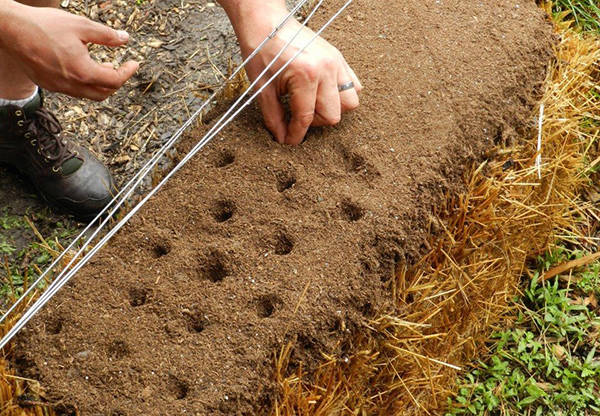

Once the conditioning process is over, you will simply plant the seeds, germinated seeds, or small plants inside the bales. Make sure the temperature inside is adequate; otherwise, it may hurt your plants. If it’s a little warmer than the outside, it’s okay, as this will promote root growth.
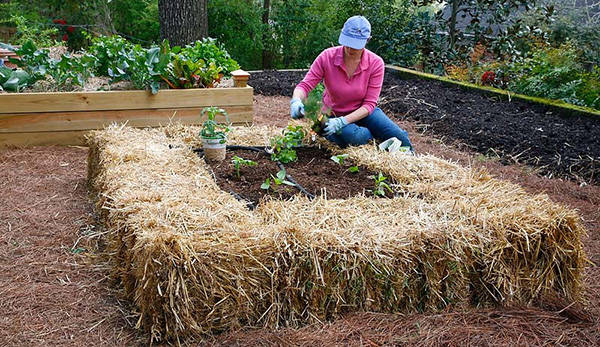

What are the appropriate plants for your bale garden?
In your bale garden, you can grow pretty much everything. It will love all the annual vegetables and herbs; however, I wouldn’t go for very heavy plants like corn. Tomatoes, cucumbers, peppers, squash, zucchini, melons, beans and peas can be successfully grown, leafy vegetables, eggplants and just about anything else you can think of.
Here’s a video on how to get started:



